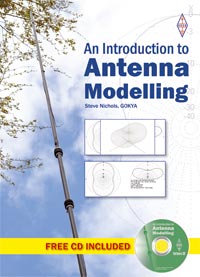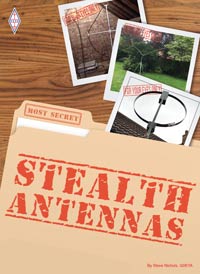 |
| The radiation pattern for a quarter wave vertical. |
This is probably not the best way to go about it as the off centre feed can cause an imbalance and create RFI problems.
I suggested a better DX antenna might be a quarter wave vertical cut for the band in question and fed against a decent ground plane. But what is a decent ground plane?
Rudy Severns N6LF has done extensive research on this, but his conclusion was that you really need as many radials on the ground as possible. Up to 120 is optimal, but you will notice an improvement as you add more and more with perhaps 16-32 being the minimum for good performance.
Don't be misled by your SWR meter as a single earth stake may give you a low SWR, but what you are seeing may be the effect of ground losses.
A quarter wave vertical should have a theoretical impedance of about 35-36 Ohms, so if you have a 1:1 match you are seeing 35 Ohms, plus 15 Ohms of ground losses.
As you add more and more radials the SWR may INCREASE. This shows it is starting to get closer to the optimum 35 Ohms.
The goal is to keep on adding ground radials until the SWR stops changing. Then the vertical is working about as good as it can.
Rudy found that once you get above 32 ground radials the improvements start to get more subtle and increasingly minimal.
But how long should the radials be be? A quarter wave radial laying on the ground is detuned so a true quarter wave is no longer a resonant radial, although it is a good overall compromise.
So the golden rule is that for a given amount of wire more shorter radials are better than fewer longer ones. This helps to collect the ground currents around the base of the antenna and improves the antenna's efficiency.
If it is a multiband vertical then the compromise is to make them as long as the antenna is high. If it is a monoband antenna then perhaps a quarter wave is best, although eight "eighth wave" radials might work better than four quarter waves (if on the ground).
In tests though you will find that two resonant elevated radials fitted so that they are at 180 degrees to each other may work as well as eight or so random radials on the ground. Rudy suggests that more resonant quarter wave elevated radials may be better still, but its starts to get a bit unwieldy.
A few years ago my club used a quarter wave vertical cut for 40m and fed against two elevated quarter wave radials and it worked very well. For contacts out to Germany from the UK there was little in it compared with a horizontal half-wave dipole at about 40 feet. Closer-in contacts were louder on the half wave horizontal dipole due to the different radiation pattern, but for DX the vertical was better.
You can see this with the MMANA-GAL antenna modelling software.
We also used it on 21MHz where it was a three quarter wave vertical and ended up working India (VU).
As you can buy 10m fibreglass fishing poles for about £30 you can make an effective quarter wave vertical for very little money.
The length of the radiator will then be 300/7.1MHz = 42.25m/four = 10.56m.
If using PVC-coated wire the adjusted length will be about 10.56m x 95% = 10.03m, although start a little longer and fold or cut to get the SWR minimum.
For a 30m quarter wave vertical the sums are:
300/10.1MHz = 29.7m/four = 7.42m or about 7.054m if using PVC-coated wire.
Once optimised expect to see an SWR of about 50 Ohms/36 Ohms (the impedance of a quarter wave vertical) = 1.4:1 or 1.5:1 NOT 1:1.
Although putting a quarter wave vertical (or Hustler/Butternut) on a single earth stake will work, you are throwing away its efficiency.
Why not try building one and let me know how you get on?










